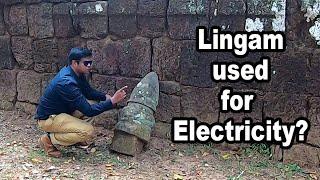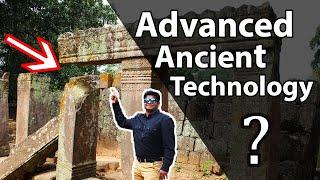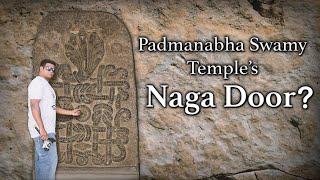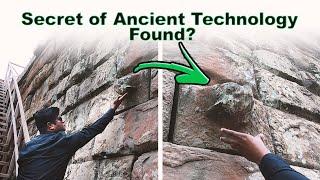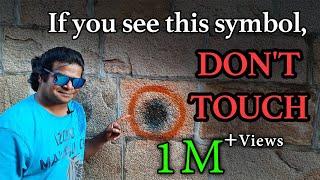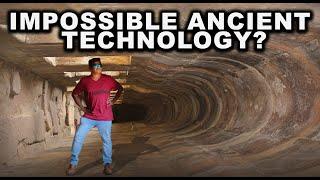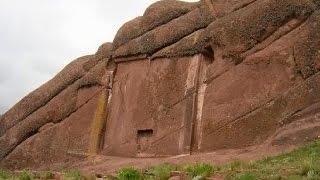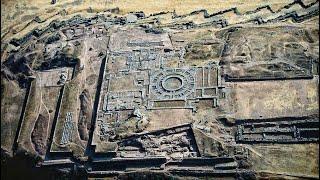Baffling NEW Ancient Technology Discovered? 1000 Year Old Secret Technology Behind Hindu Temples
Beschreibung
Instagram................ https://instagram.com/praveenET
Twitter...................... https://twitter.com/IamPraveenMohan
Facebook.............. https://www.facebook.com/praveenmohanfans
Website.................... https://www.phenomenalplace.com
https://www.youtube.com/watch?v=-9XcDAB3dw4
Hey guys, today we are going to look at some, really interesting ,ancient rock binding technology. I am quite excited to show you this, because I think I have just discovered something completely new, and this technology is not known to anyone today, so please watch till the end of this video and let me know what you think. Usually, I show you different types of rock cutting technology, but today let us focus on how ancient builders tied or fastened 2 rocks together, this is called Rock Binding Technology. Rock binding is as important as Rock cutting itself. For example, we are looking at a 500 year old temple in Cambodia. Can you tell where the rocks are joined in these blocks? Of course, you can tell the blocks at the ground level, but what about the next level. How many separate blocks do you see? How are they assembled? This is an example of perfect rock binding technique. So how did ancient builders bind 2 rocks together?
In temples of Cambodia, we can see this strange wedge shape cuts placed on stones. When you first look at it we don't understand what it is. Look at this block, here you can see a T shaped cut on this giant stone block. What is the reason for this T shape cut? Let me try to explain how these T shape or Wedge shaped cuts were used. Here, I am using a type of soft foam, and let us pretend that these are 2 large stone blocks which have to make up the part of a temple wall. Now, I need to bind or tie these 2 blocks together, so what do I do? I am going to cut a T shape on each stone block. I cut one T shape on this one, and I cut another T shape on this other block. Actually, I am better off putting the blocks together and cutting an H shape. But why is this necessary? Now, I am going to pour molten metal into this depression, of course I cannot put molten metal here, because this is foam, not stone, and foam will be completely destroyed if I use hot metal. But let us imagine this hot glue, is molten metal, you can see the molten metal settles in this H shape and let us wait for it to solidify. Ok it has solidified not, watch what happens. The stone blocks are now tied together, I can pull or push them together and you can see they act as one block of stone. This is just brilliant, this is what ancient builders did in Cambodia. This technology is known as Ancient Clamping or sometimes Keystone Cut technology.
This is not a guess, we can actually still see the metal clamps in the ancient site at Warangal in India. These mysterious structures were built at least 700 years ago, and the metal clamps are still in place, or in-situ, binding the different stone blocks together. Without these ancient clamps, this massive gate would not be standing today. But this ancient clamping technology is not limited to just Hindu structures, we can see the same technology in many places around the world, we can see many ancient metal clamps in museums of South America in places like Peru. In Greece, we can see these metal clamps still in place, using to fasten giant stone blocks, these are 2500 years old, at a place called Delphi.
But remember, I told you I found something completely new. Let us go back to the ancient Ta Prohm temple at Cambodia, and here we can see something really interesting. What do you see? A combination of metal clamping and deep holes drilled on 2 adjacent stone blocks. Remember, I showed you Keystone cuts separately, and circular holes separately in ancient temples, but the combination of these 2 techniques, will produce some truly fantastic results.
What do I mean by fantastic results? Let us reproduce the same cuts and holes here, and see what the ancient builders were doing. Here I have 2 stone blocks, and I am putting them side by side. I make a straight line cut spanning both blocks, but at the end of the lines, I am going to make deep holes. So, let me drill deep holes on both sides, may be about half the depth of the blocks. And now, let me pour molten metal inside. Let us just wait till the metal solidifies and Now, what happens? The solidified metal is not only on the surface, but also goes deep. This is not just a clamp, it is ..this is like a horse-shoe that goes deep inside the stone blocks. Like I said, this is a completely new find, so there is no name for this, let us just call this Ancient HorseShoe Technology. This technology is much better and gives a stronger bind because it goes deeper than the ancient clamps.
But I think, ancient Hindus were using a much more advanced technique than this Ancient Horse Shoe technology. What if, they made similar cuts and holes on the other side as well? This is hard to visualize, so let me demonstrate what I mean.
#Cambodia #Ancienttechnology #PraveenMohan

